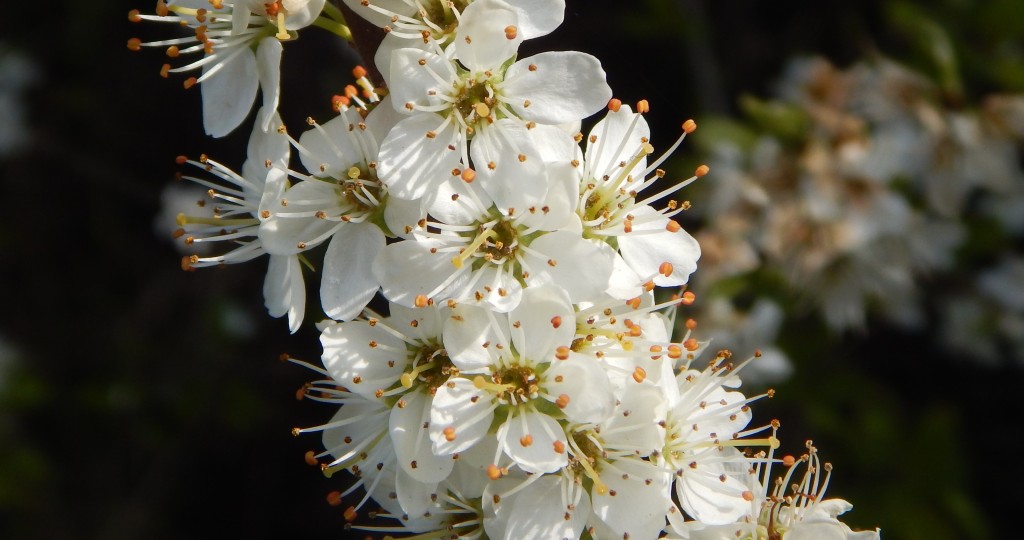
[280] Prunus avium, Wild Cherry and others
Introduction
There are twenty species of Prunus seen in Britain out of over four hundred worldwide. Most are called cherries but they also include almond, apricot, peach, plum and three other species coming in the next two days. They are widely grown for their fruit but also for their flowers.
I will look at twelve of these species in the next three blogs, some in more detail than others.
My title species is Prunus avium, the main species producing the cherries that we eat. It is generally called Wild Cherry.
This will be a very long blog. Scroll down if you just want to see pictures of cherry blossom!
Taxonomy
Kingdom – Plants
Division – Vascular Plants
Class – Angiosperms (Flowering Plants)
Order – Rosales
Family – Rosaceae
Subfamily – Amygdaloideae (Includes Apples, Hawthorn and Cotoneaster)
Tribe – Amygdaleae (Just Prunus)
Genus – Prunus
Subgenera and sections are mentioned in the text.
Scientific Names – Prunus avium and others
There are many other species and many varieties and cultivars. See the next sections.
Names
Prunus is the Latin word for the fruit we call a plum. It comes from the Greek proune, taken from another language of the region. The history of which species were known in Roman times, and which were cultivated, is unclear. In modern English, the word prune is only used for dried plums.
For names relating to the individual species see below.
Prunus
Species within Prunus are all trees (or shrubs) with drupe fruits – like berries with stones. Flowers are open with five petals, usually from white to pink in colour. Many species are cultivated for their flowers,
The classification of the genus Prunus into subgenera and sections is understandably complex and is not helped by a complex history of domestication and hybridization. Different countries have adopted different ideas.
Recent scientific analysis suggests the following.
- Subgenus Padus. Includes [9] Prunus padus, [7] Prunus laurocerasus, and[8] Prunus lusitanica.
- Subgenus Cerasus. Includes [2] Prunus avium, [4] Prunus cerasus and [11] Prunus serrulata.
- Subgenus Prunus, divided into sections.
- Section Prunus. Old World Plums. Includes [3] Prunus cerasifera, [5] Prunus domestica, and [12] Prunus spinosa.
- Section Armeniaca. Apricots. See [1] below.
- Section Amygdalus. Almonds. Formerly a separate genus Amygdalus. See [6] below.
- Section Persica. Peaches. Not clearly separated from Section Amygdalus. See [10] below.
- And three other sections not relevant to the UK.
Prunus trees have been so widely cultivated that their origins and native locations may not be clear. Many species have many cultivars and hybrids selected for ornamental cultivation, so that wild or naturalized ones may be difficult to identify. I have picked the main species and later there are a few pictures that are non-specific.
I could say a lot about cherries, plums, apricots, peaches and almonds, all of which are widely cultivated as foods. They are eaten as fruits or nuts. Some are used in cooking, some are turned into juices, and they can be turned into alcoholic drinks. But they are not cultivated as foods in the UK. Their purpose here is almost entirely as ornamental or decorative trees (although there may be rare exceptions.) I will include very brief summaries of commercial production in the relevant species descriptions.
[1] Prunus armeniaca
Prunus armeniaca is known as the Apricot. [About ten other species are also called apricots.] The Latin persica meaning peach, from praecocia, earl ripening, led to the Greek praikokion and berikokkia, apricot tree. In Arabic this became al-barquq, plum, and via Catalan to the Spanish albaricoque, Middle French abricot, and Middle English abrecock. This species presumably arose from what we now call Armenia.
Apricot fruits are usually orange, about two centimetres in diameter, and firm rather than juicy. They are sometimes velvety and varieties can be either sweet or sour.
Apricots have been cultivated extensively since prehistoric times. They probably originated in central Asia but have naturalized now in many countries. Most commercial apricots come from Turkey. They are often sold as dried apricots. I have never seen an Apricot tree and they are not common in the UK.
[2] Prunus avium
Prunus avium is usually called Wild Cherry. In Latin Prunus avium actually means Bird Cherry. (Note that avium is genitive plural, cherry of the birds.) Cherry comes from the Latin and Greek kerasos. (See below.) It lost the ending because the Norman French cherise was mistakenly presumed to be plural.
Wild Cherryis also called Sweet Cherry and sometimes, confusingly, Bird Cherry. It is native to most of Europe including the British Isles and some adjacent areas. Other wild species elsewhere may be called Wild Cherry.
It is a deciduous tree, growing to twenty or thirty metres in height, with dark purplish brown bark and simple, dark green leaves. They are long thin pointed ovals in shape with serrated edges.




Flowers are produced in Spring at the same time as new leaves. They have five petals and are pure white. Fruits are the familiar dark red cherries and are eaten and dispersed by birds. All parts of the tree are slightly toxic apart from the ripe fruit.
They have been eaten and cultivated since prehistoric times. This species has produced many varieties and cultivars including those used in sweet cherry production and many ornamental varieties. Its timber is also used for furniture and musical instruments.
Most sweet cherries (for eating) are produced commercially from cultivars of Prunus avium. The top producing countries are Turkey and the USA.
[3] Prunus cerasifera
Prunus cerasifera is known as the Cherry-plum (or Cherry Plum.) It is actually a plum with small fruit. Cerasifera means bearing cherries. [As you know by now, both common names and scientific names can be confusing, ambiguous and erroneous.]
The Cherry-plum is native to Southeast Europe and Western Asia and naturalized in the British Isles. It looks similar to Prunus avium but smaller – about ten metres in height – with flowers that can be pale pink and larger fruits that can be yellow or red. They are the size of large cherries or small plums!
This is a popular cultivated species with many cultivars. Some have purple foliage or purple fruits.

[4] Prunus cerasus
Prunus cerasus is the Dwarf Cherry or Sour Cherry. Cerasus comes from the Greek kerasos, cherry, probably taken from another language and relating to a species that might have been Prunus avium or Prunus padus.
It grows to five to ten metres in height. The fruit, which is a much darker red in colour, is more acidic and sourer in taste than sweet cherries. It is believed to be a natural hybrid of Prunus avium with another species Prunus fruticosa that arose in Eastern Europe and Western Asia. It has been cultivated in England since the time of Henry VIII.
Most cherries are produced either from cultivars of Prunus avium (for eating) or from Prunus cerasus (in cooking.) The top producing countries are Russia, Ukraine, Turkey and Poland for sour sherries.
This is another species that I have not seen.
[5] Prunus domestica
Prunus domestica is the (Wild) Plum. The word plum came via Germanic roots and is cognate with prunus.
This species is the source of most fruit sold as plums. The fruits are much larger than cherries. They are typically from red to purple and there is a purplish colour called plum. There are many varieties that include some with fruits that are yellow, green (sometimes called greengages) or blue (sometimes called damsons.) Some varieties are eaten directly, some are sour and require cooking with sugar. Many plums are sold as prunes (dried plums).
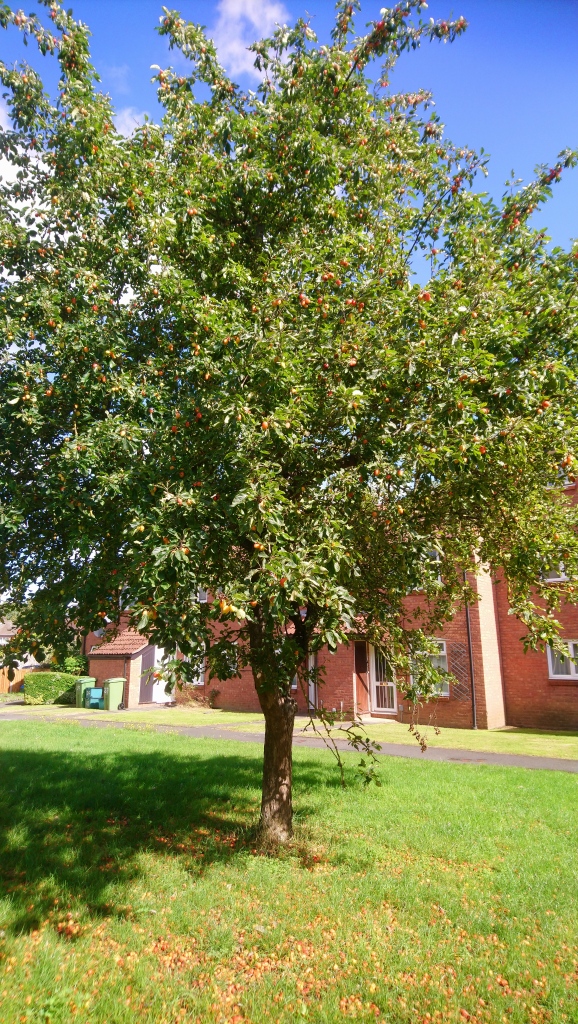
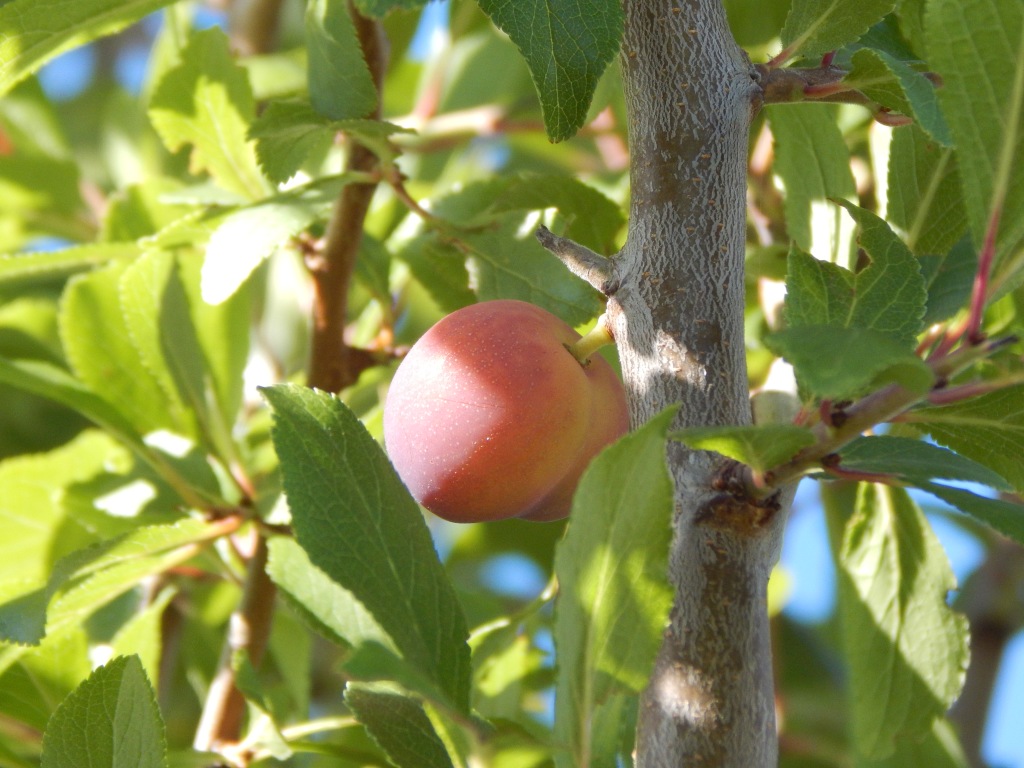


Most plums – mainly Prunus domestica, Prunus salicina and hybrids – come from China, Romania and Serbia. (Production figures include sloes, which are very different and will be explained in two days under Blackthorn.)
[6] Prunus dulcis
Prunus dulcis is the Almond. The word comes via French from the Latin amandula from the Ancient Greek amygdale. The inserted ‘L,’ which is not pronounced may have come from confusion with the Arabic article al-. Dulcis is Latin for sweet.
The Almond is quite a large tree. The outer part of the fruit (corresponding to the flesh of a cherry) is a thick, leathery grey-green hull. Inside this is a hard, woody endocarp (nutshell) enclosing the familiar almond nut – the actual seed – usually one but sometimes two in a single shell.
They are one of the earliest domesticated trees and they spread from Iran initially around the Mediterranean. Cultivation led to sweeter varieties being selected rather than some of the wild varieties that are bitter.
Commercially Almonds mostly come from the USA. As well as the nuts being eaten, they are used widely in cooking and to make marzipan, amaretti liqueur and many other things. Pollination of almond trees in California is the largest managed pollination event in the world, involving over a million beehives from all over the USA.
I lived for over thirty years with an Almond tree next door – the only Almond tree I have seen. A few years ago, I photographed it through the seasons for another blog.
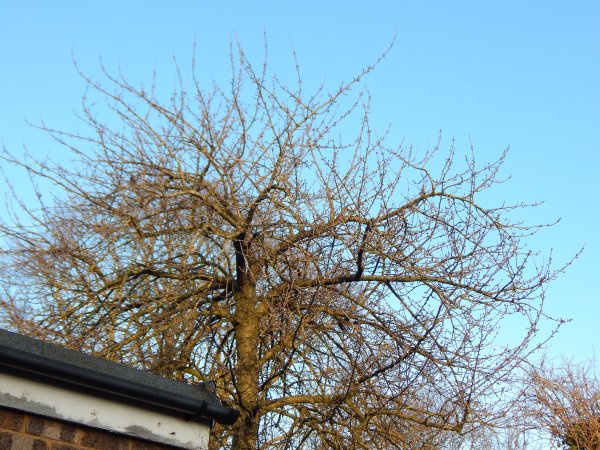




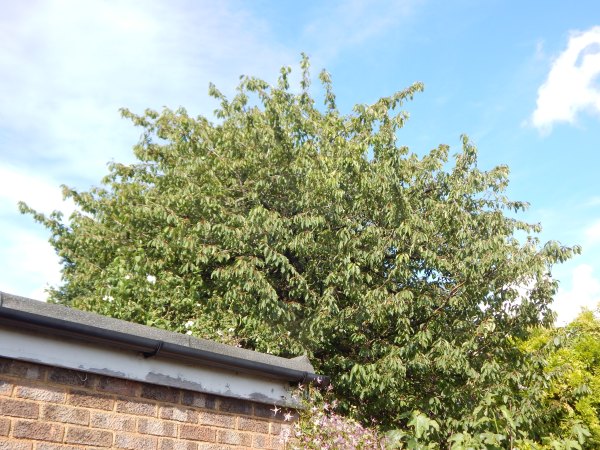
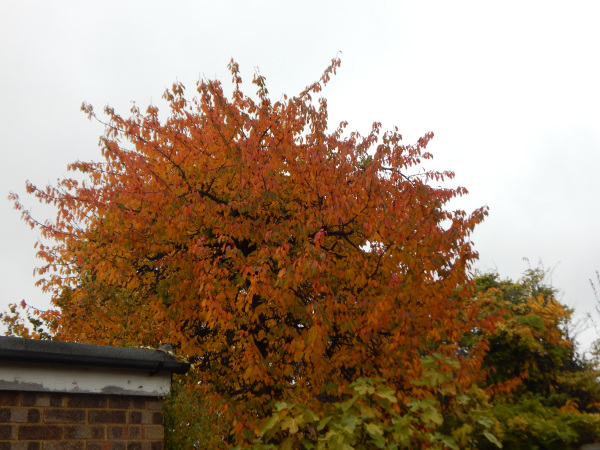
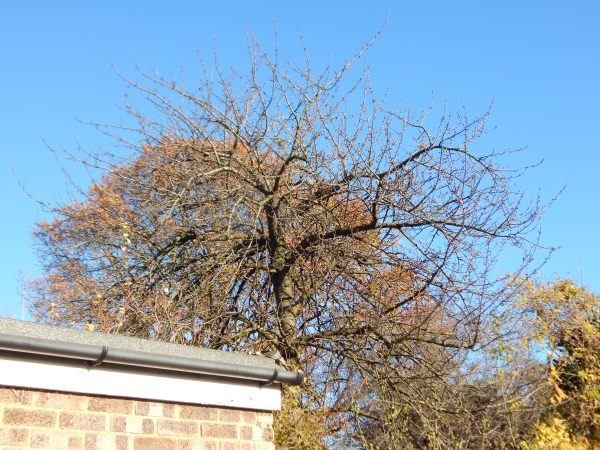
As you can see it is a large tree producing masses of flowers. I don’t remember it ever dropping almonds into our garden but I do remember its long roots that ran under our lawn and as far as next door the other side.
[7] Prunus laurocerasus
Cherry Laurel is coming tomorrow.
[8] Prunus lusitanica
Portuguese Laurel is coming tomorrow.
[9] Prunus padus
Prunus padus is called Bird Cherry. For the scientific name, all I can find is that Padus is the Latin name for what is now called the River Po in Italy.
Bird Cherry is native to Northern Europe including the UK and central Asia across to Japan. It is also cultivated as an ornamental plant. Its fruits are not normally eaten by humans – but birds like them! They have been used traditionally in some countries.
I try not to introduce many technical terms into these blogs but I have often talked of inflorescences. which are groups of small flowers sometimes looking like a larger flower. Well, the inflorescences of Bird Cherry and others in the subgenus Padus are racemes rather than corymbs. (Informally a raceme looks more like a spike. A corymb looks more like an umbrella shaped umbel.)

Other cherry species have this distinctive bark colour.
[10] Prunus persica
Prunus persica is the Peach. Persica is Latin for Persian. In Ancient Greek the peach was called a Persian Apple, malon persikon, and the word peach has come via Latin and Old French.
The Peach tree originates from China but came to Europe via Persia (modern Iran.)
Its edible juicy fruits are much larger than cherries or plums, with a larger stone. The peach nut can be used in the same way as the almond. Peaches usually have a fuzzy skin. Varieties with a glossy skin are generally called nectarines.
Most peaches, including nectarines, come from China. The trees are not common in the UK.
[11] Prunus serrulata
Prunus serrulata is the Japanese Cherry. Serrulata means minutely serrated as its leaves.
TheJapanese Cherry comes from Japan and the Far East, where it has been extensively cultivated as an ornamental tree. Its many cultivars probably involve hybridization with other species. It is one of the most common cultivated ornamental trees in Britain.
It grows to about ten metres with a smooth chestnut brown bark. Leaves are finely serrated. Its flowers, much prized in Japanese culture, are from white to pink. It had been developed for its flowers and its fruits, small and black, are not edible. They do not fully ripen.
Its many cultivars are heavily hybridized with several other Japanese Prunus species. They are often grown grafted on to a Prunus avium rootstock and may not produce any fruit.
Cultivars may have larger, more complex flowers, sometimes darker shades of pink.


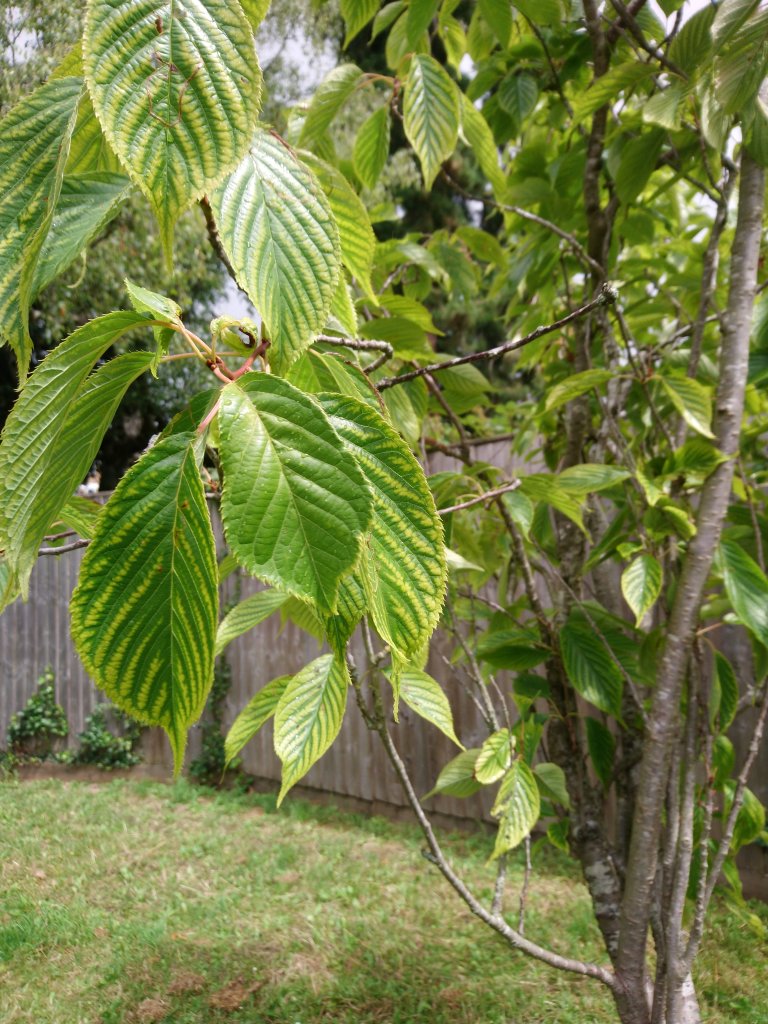




We have four trees in gardens just outside our house. In the autumn the leaves go through a stage of variegated yellow and green and turn to a dark red.
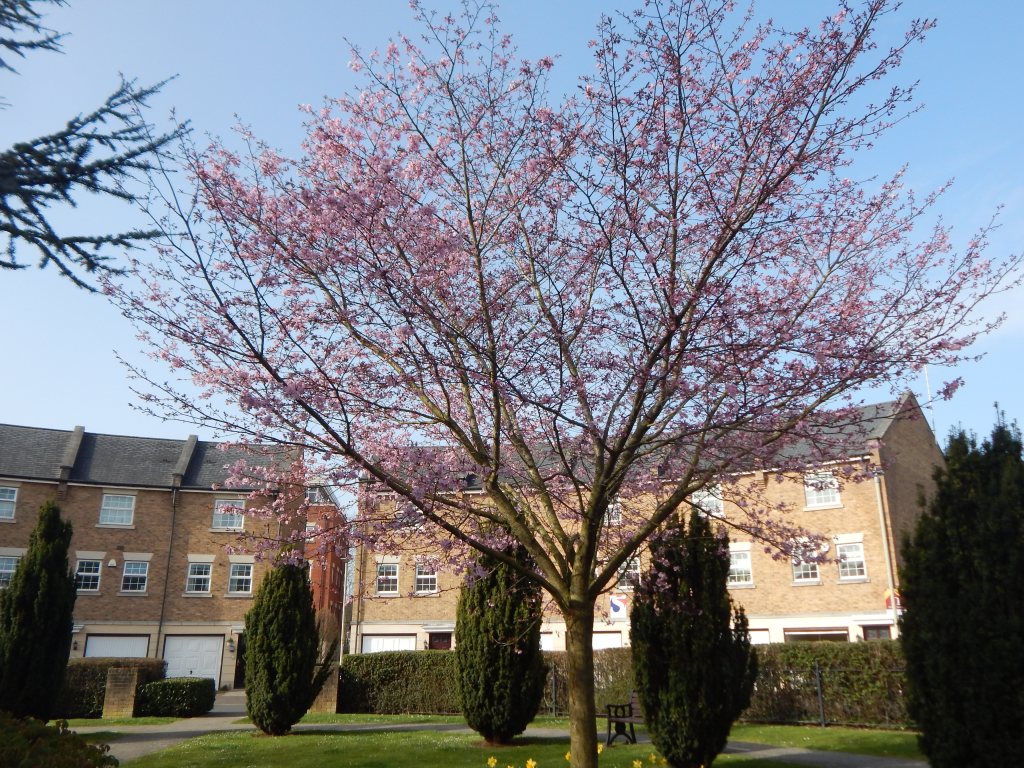








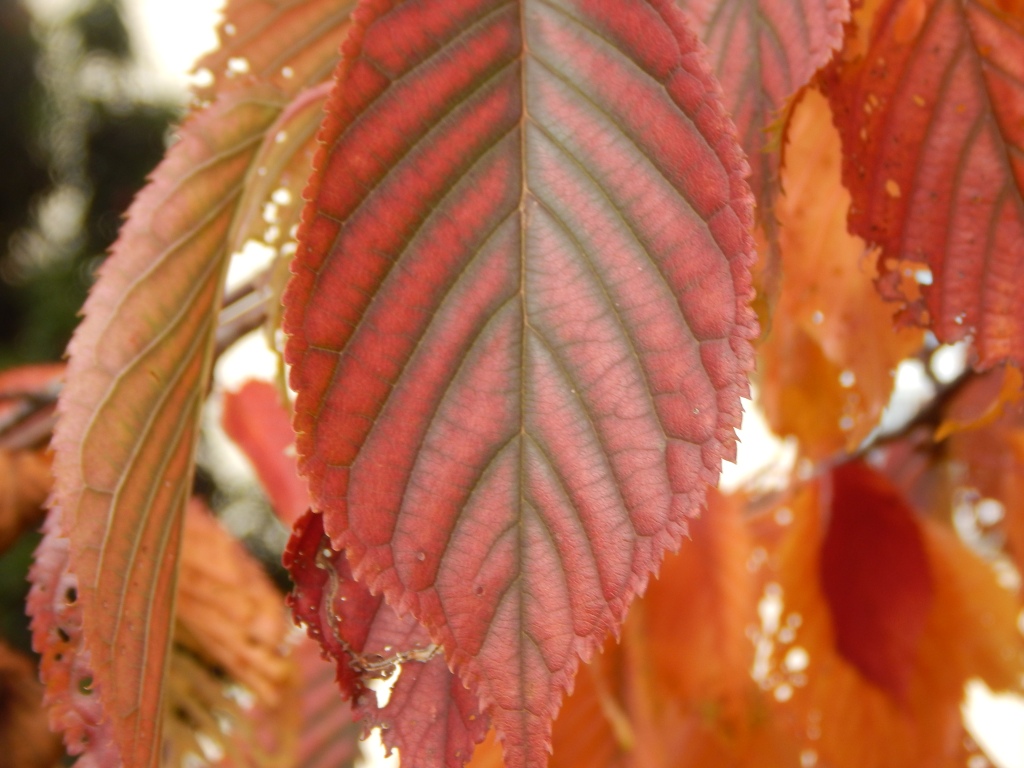

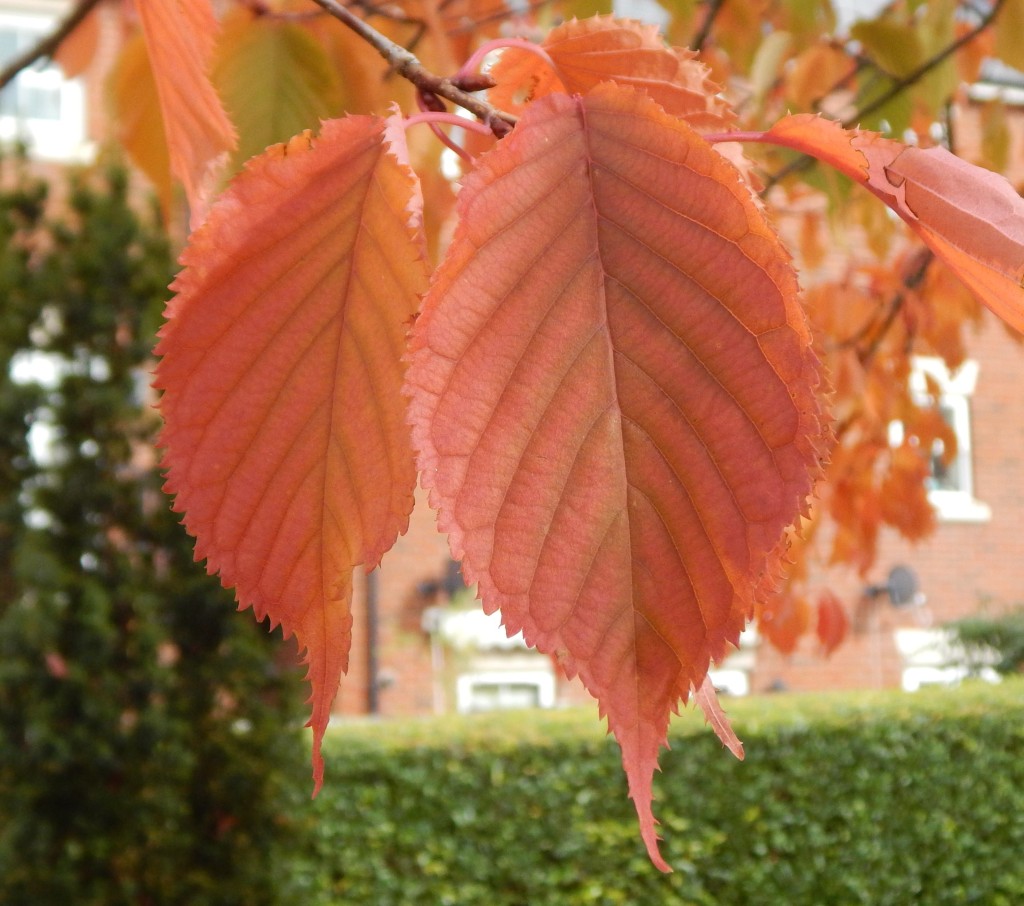
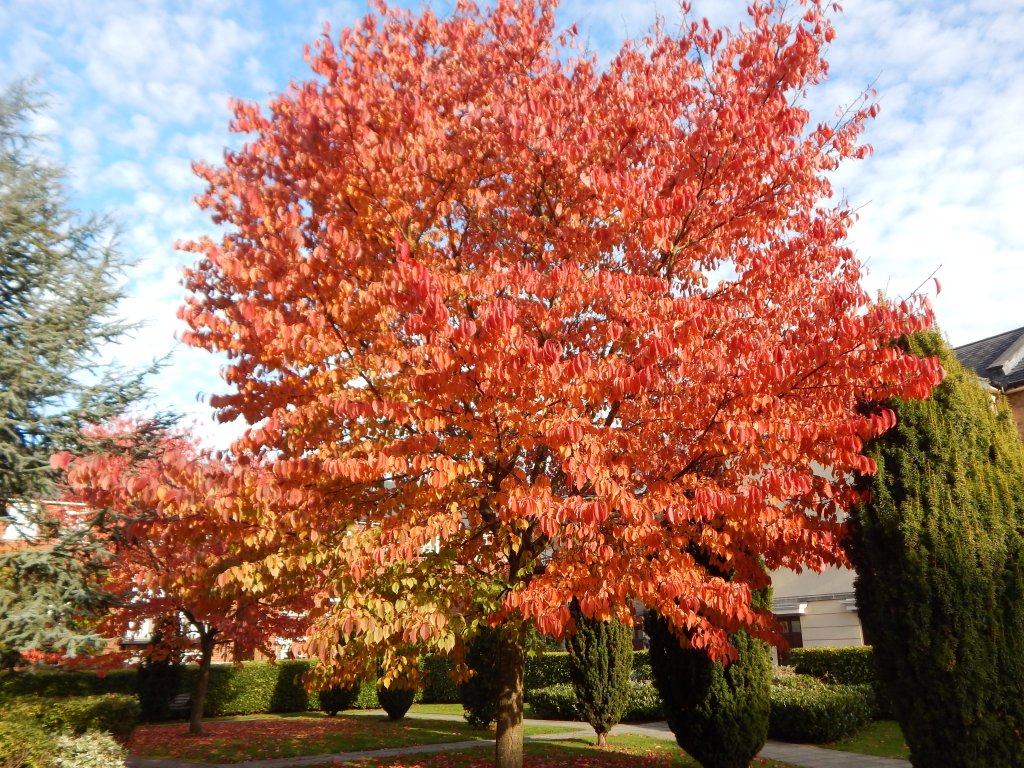
[12] Prunus spinosa
Blackthorn, also called Sloe, is coming soon.
Other Notes
I am left with a few pictures of cherry blossom from one or more of the species of Prunus.


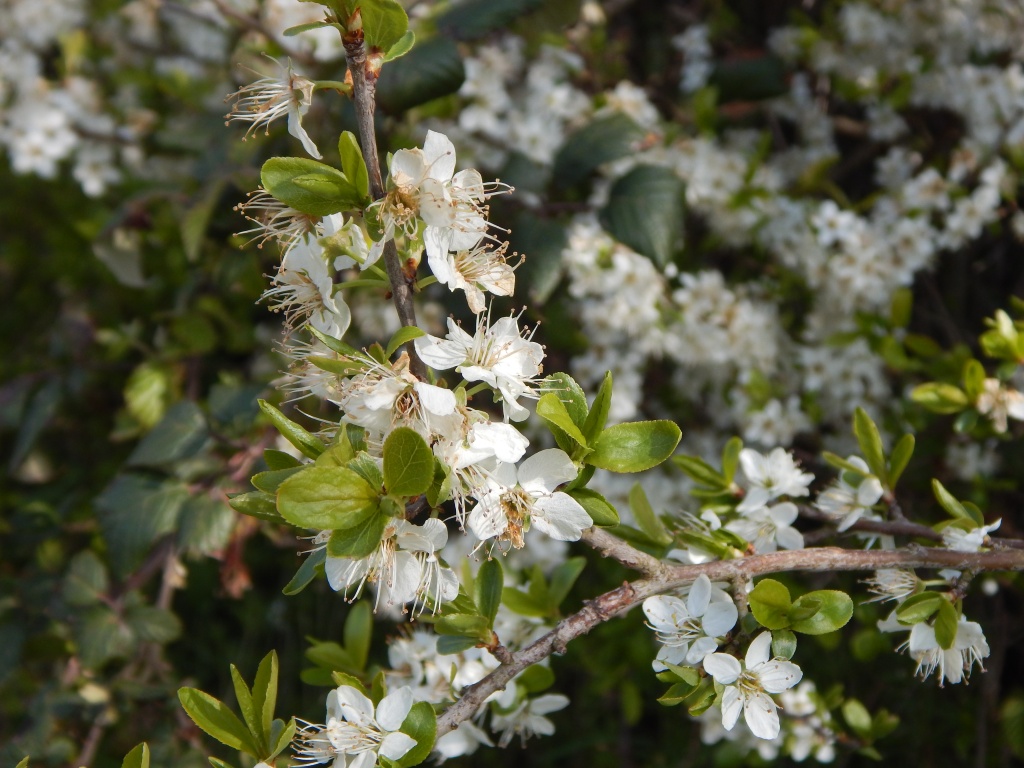

See also
Coming soon, [281] Laurel and [282] Blackthorn.
